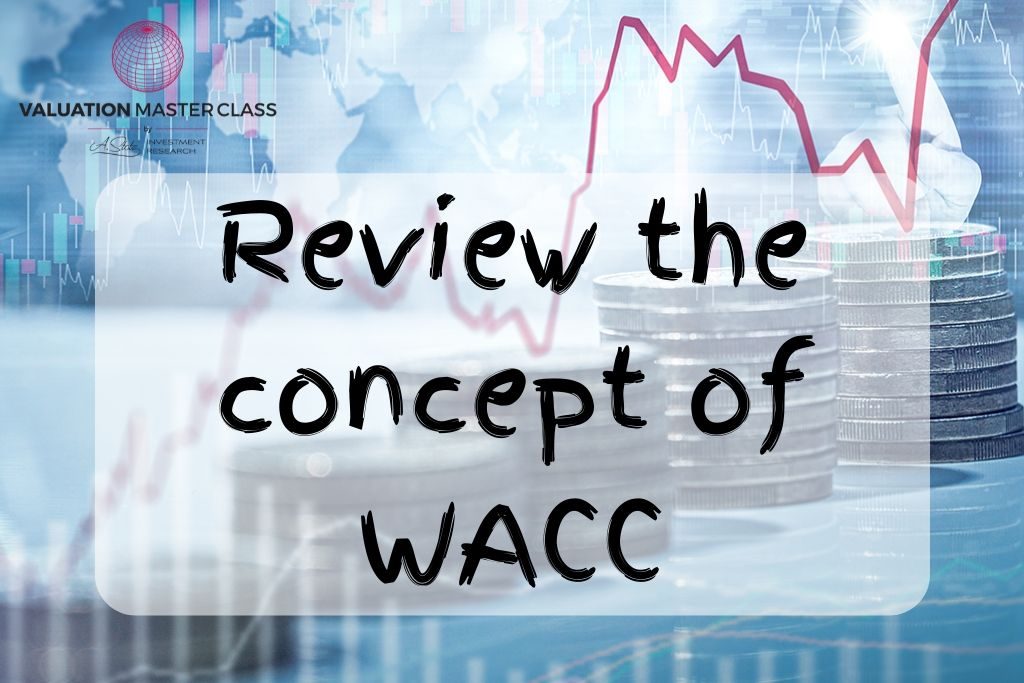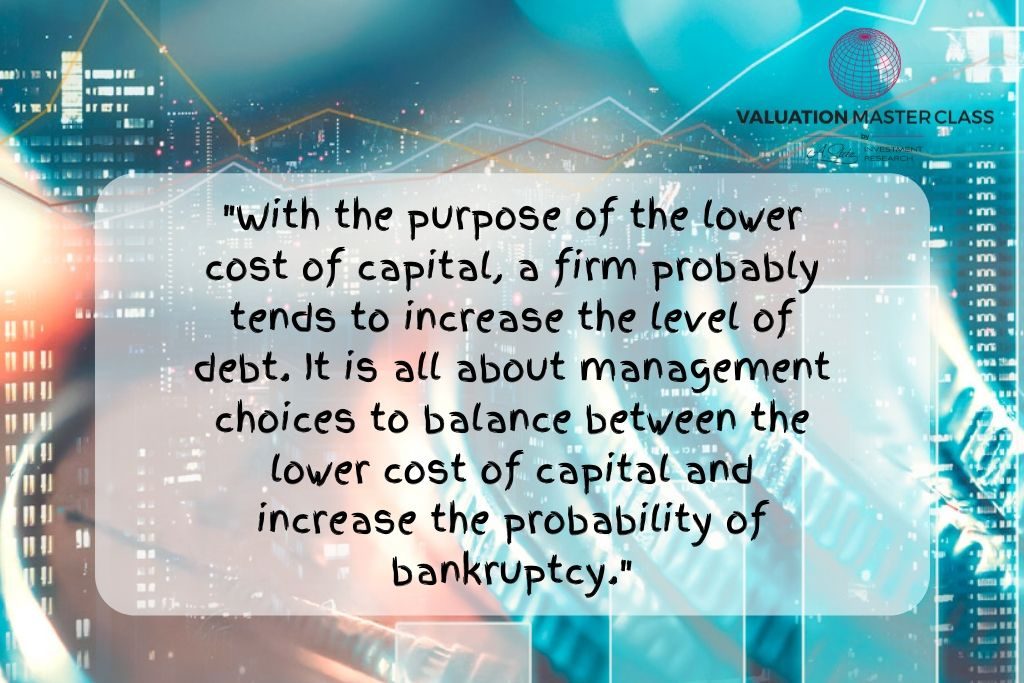Review the concept of WACC

This is a Valuation Master Class student essay by Teeradon Piyakiattisuk from March 19, 2019. Teeradon wrote this essay in Module 2 and has since completed all five modules of the Valuation Master Class.
Weight average cost of capital (WACC) is a calculation of a firm’s cost of capital which includes all sources of capital such as common stocks, preferred stocks, and bonds. A firm uses a mix of equity and debt to minimize the cost of capital. In general, the cost of debt is lower than the cost of equity due to the tax advantage of debt. However, no firm can use 100% debt to run its business. The cost of capital also reflects the riskiness of a firm which reflects the required rate of return. This analysis explains the components and reviews the advantages and disadvantages of WACC. Finally, it will explain the controllable and uncontrollable factors that affect WACC.
Components of WACC
To calculate WACC, the cost of each capital component will be multiplied by its proportional weight. The formula is expressed in the following.
The cost of debt (Kd) is relatively straightforward. A firm borrows from banks or bondholders and it has to pay the interest. The cost of debt is determined by the interest charge on borrowed funds. A firm has the benefit of a tax shield which is a reduction in taxable income. Interest paid is a tax-deductible expense which allows a firm to deduct tax liability. Therefore, the real cost of debt should be the interest minus tax savings.
The cost of equity (Ke) is an expected return that a firm pays to an equity investor to compensate for the risk of investing capital. It can also imply a minimum required rate of return that an investor is willing to hold stock. The popular method to find the cost of equity is the Capital Asset Pricing Model (CAPM). The formula is expressed in the following.
The formula implies the return an investor expects from a risk-free investment plus the return from the stock in relation to market volatility. The market risk premium is calculated from a market rate of return less a risk-free rate. It represents the return that an investor expects to hold a stock to compensate for the extra risk relative to holding a risk-free rate.
Suitability and limitation
WACC is viewed as the overall required rate of return on a firm as a whole. It is often used internally as a hurdle rate to determine the feasibility of investment projects. A firm usually compares a project’s internal rate of return (IRR) against the firm’s WACC. In another word, it is a minimum rate that a firm can accept the investment projects. If IRR is greater than WACC, the project should be accepted because the return from the project is higher than the firm’s cost of capital. Likewise, any projects that have IRR less than the firm’s WACC will destroy the company value. WACC is also viewed as appropriate for a discount rate. It represents the minimum rate of return required by an investor relative to holding stock.
Difference Between Cost Method and Equity Method
The cost method of accounting is more widely used among investors, particularly retail investors and institutional investors who account for their investments in other companies under this method. Usually, the retail investors or institutional investors would look only for capital gains or regular income in the form of dividends while investing and would not generally look to buy stocks in larger quantities so as to get a controlling stake over the company. The equity method is used mainly by corporations who, due to strategic or goal-oriented reasons invest a considerable stake in another company which gives them influence over the board and decision making of the investee company. Under the cost method, the investment value remains unchanged in the books, whereas under the equity method, the value is initially recorded at cost, but is subsequently adjusted for the gains/losses of the investee company according to the parent company’s shareholding percentage. Since the value of investment falling under cost method is lesser, the investment value is not tied to the performance of the investee company, but in case of the equity method, since the value of the investment is more significant resulting in greater influence, the investment value is tied to the performance of the investee company. In the case of cost method, dividends are recorded separately as income in the profit and loss, whereas in the case of the equity method, dividends lower the investment value as dividends reduce the investee company’s equity.
In practice, it is difficult for the firm to maintain its capital structure. WACC is assumed to be constant which means D/E ratio should remain constant which is impossible. Lower WACC can increase the present value of a firm. It tends to add debt beyond the optimal capital structure. Therefore, the risks of the firm are eventually increased. WACC is difficult to estimate for private firms. The cost of equity is related to its beta, which is resulted from a relationship between a stock price and market index. A comparable method is more suitable for this case.
WACC is highly sensitive to many factors
A firm has its ability to control the capital structure policy. Recall that bearing cost of debt is usually cheaper than the cost of equity. With the purpose of the lower cost of capital, a firm probably tends to increase the level of debt. It is all about management choices to balance between the lower cost of capital and increase the probability of bankruptcy. A firm with high leverage is more vulnerable to downturns in the business cycle. A firm’s investment activities influence the cost of capital. WACC will depend on sources of capital when the firm merges or acquires another firm. It also is management choices to choose which sources capital is suitable for.
On the other hand, a firm cannot control economic factors. Interest rates fluctuate for a variety of reasons such as inflation. A change in a firm’s cost of debt is part of economic conditions. The cost of debt also affects the tax rate which depends on a country’s fiscal policy. In terms of cost of equity, it varies on the beta which depends on the market, which ultimately is relied on the economy of a country.
Conclusion
WACC is a suitable measure for some reasons. The concept is simple. It can be a measure to choose a firm’s investment projects and a minimum required rate of return for an investor to calculate a firm’s value. However, its calculation is not simple. WACC heavily relies on many assumptions such as a firm’s target capital structure and a firm’s beta.



